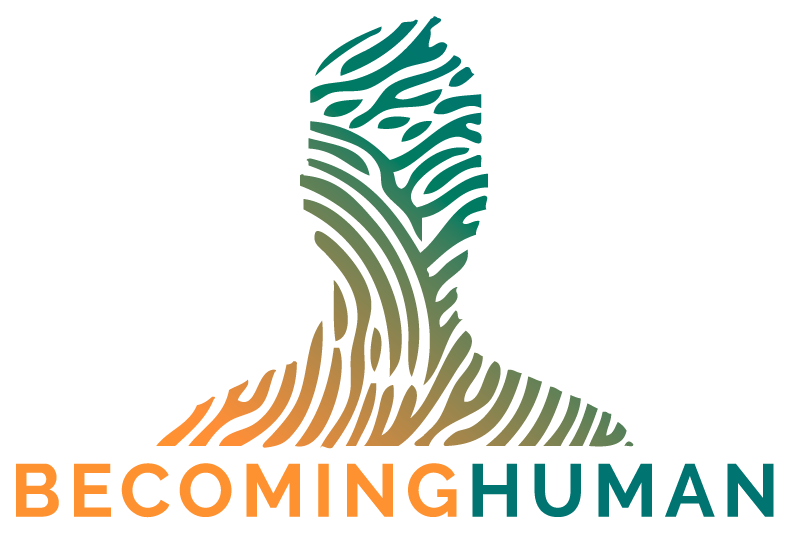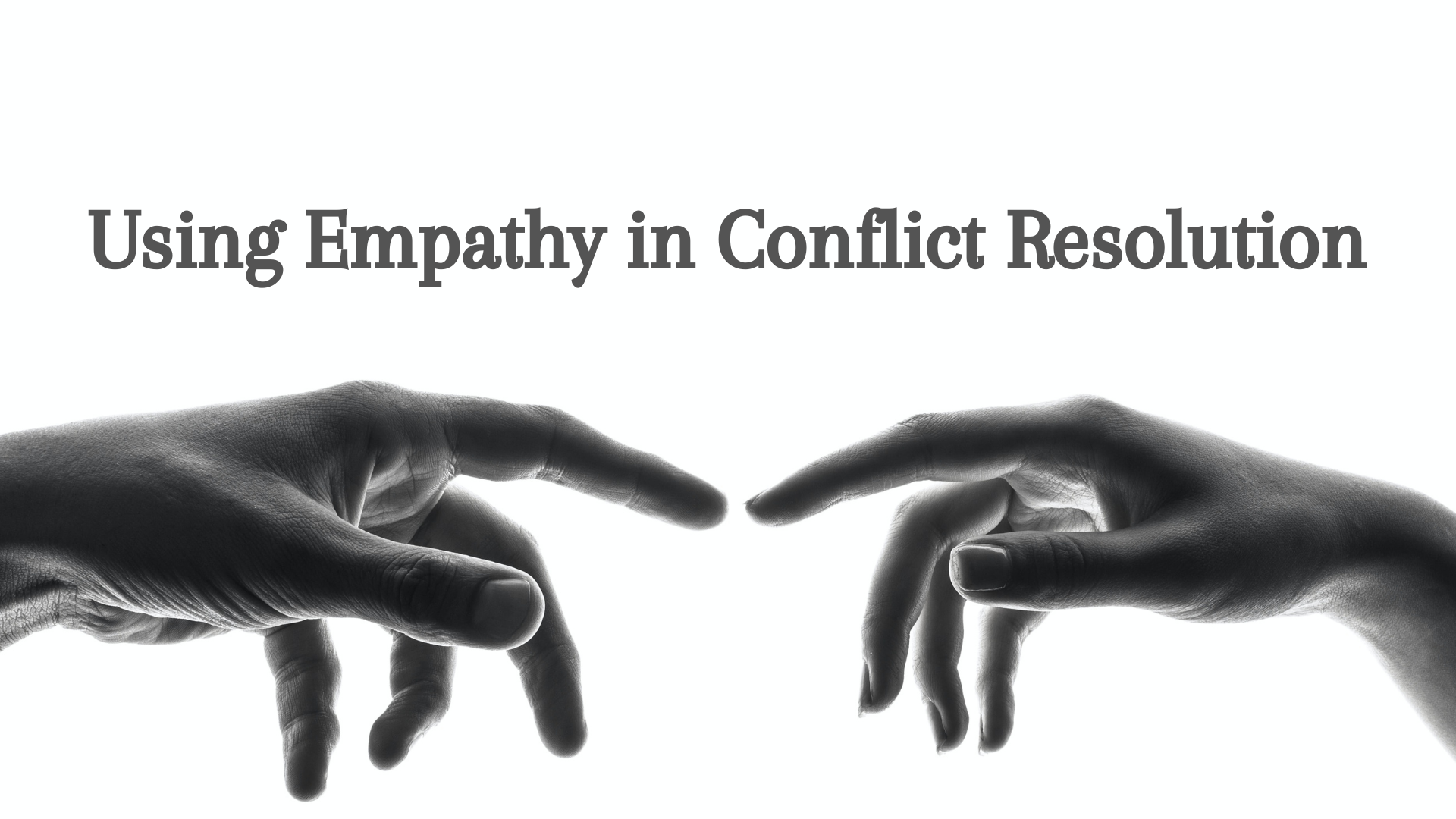Tigers, Critique, Prophecy, & Longing For the Immensity of the Sea - [How to Change Other People]
/Introduction — Are We Allowed to Talk About This?
While changing yourself is a noble pursuit that is also of quite topical interest in culture today, changing other people is a little less romanticized…even though it actually more likely to be pursued by most of us. It kind of feels like we aren’t supposed to talk about this as there is an unhealthy stereotype that dominates the discussion, but, if we are honest, changing other people is a seemingly default posture in human nature.
We often yearn to change other people more than we actually want to change ourselves.
So we might as well talk about it.
Often, moving people from point A to B to C is taboo because of the associated implications that involve lots of destructive, selfish, and unproductive experiences in doing so. The normal way of changing others hasn’t exactly been healthy. How, then, do we channel this motivation that often pervades our relational impulses to be more constructive?
Again, nobility would tell us, “Don’t try to change other people. Control only what you can control. Don’t take responsibility for others.”
I would agree.
That posture of control often results in impersonal, selfish ambition that ought to be avoided. However, simply by being alive and in contact with another being, you are going to change them — it is unavoidable. The question isn’t, “Do I change other people or not?” The question is, “How do I navigate my interactions with other beings so that my impact is healthy, other-centered, and constructive for everyone involved?”
You can certainly be above the toxic control that dominates this discussion, but high and might aside, especially in the most trafficked relationships of our daily existence, what is the best way to interact with the inevitability and, let’s be honest, the desire to change other people?
First from a Korean folktale, then a little science, theology, psychology, and, finally, a quote that has vastly shaped how I lead, parent, and interact with my community.
Part One — The Tiger’s Whisker ( A Korean Folktale)
There was a young spouse, just several years into her marriage, who was at her wit’s end. Her husband had always been a gentle, tender, and loving mate before he had left for the wars. Upon his return, however, he was consistently cross, angry, and unpredictable to the point that she was afraid to live with him. Occasionally she would glimpse his former self of the man she had come to know and love, but the resentment had built exponentially and their relationship was dire.
When her situation became unbearable, she sought out a wise sage who lived high in the mountains. She climbed for many days until finally reaching an obscure cave-like structure and, as she approached the open doorway, she heard a voice echo from inside,
“I hear you. What is your need?”
The woman stepped back at the announcement as the wise sage had not yet turned her back. Unsure of how to proceed the wife explained her situation and her deep desire for her husband to change.
The wise sage heard the woman’s story and simply said,
“What do you expect me to do about this?”
The wife had no certainty on recommendations she was apt to give such a wise sage and simply offered for the sage the most simple solution she assumed wise sages did — to make her a potion or drink that would do the trick and put everything right.
The wise sage responded that no such potion exists, though, as she thought longer, she supposed one could be concocted. The wise sage explained,
“You will need to bring me a blade of grass from a fertile marsh and a peppercorn.”
The wife was relieved at the ease of this task, but just as she was about to leave the cave, the wise sage finally turned around, looked her straight in the eyes and said,
“But there is one more ingredient that will be necessary to cure your situation. It is an unusual ingredient, but in order to change your husband, the potion shall call for the whisker of a live tiger.”
“What!” the woman exclaimed. “That is impossible.”
But after getting no response from the sage who had again turned her back, the woman realized that finding this whisker was her only hope. She made her way down the mountain and, easily enough, found the blade of grass and peppercorn.
Now she was faced with her impossible task of retrieving a whisker from a live tiger.
That night she barely slept, tossing and turning over the overwhelming task ahead of her. She decided to get up early with a rice bowl covered in meat sauce and proceeded to the mountainside where a tiger was known to live. She placed the rice bowl in the open grass and hurried away, afraid of getting confronted by such a powerful creature. As she had fallen asleep, she woke up, looked out to the grass and saw that the rice bowl was gone. Disappointed that she missed her opportunity, she returned with more rice the next day, placed it in the same spot, and, again, retreated. As before, she woke up to see the rice bowl gone.
Again she put out rice, but this time she noticed the creature stir in anticipation of a meal as soon as she walked away. The woman watched the majestic tiger graciously walk up to the bowl and eat the rice before quickly proceeding out of sight. Weeks later, after providing rice every day, she returned as normal with her rice bowl, but this time the tiger came out to meet her, ate the food, and scampered away. Several days later, she noticed that, this time, the tiger sat waiting in the open grass as the woman approached in expectation of the next bowl of rice.
Weeks had now passed and the tiger had grown fond of this woman who provided such pleasant food. The woman’s patience and dedication had grown on the tiger and the powerful creature now allowed the woman to stroke its fleece.
Upon finishing the rice bowl that day, the tiger did not return to its shelter, but stayed near the woman. The next day, there was even more connection as the tiger, after finishing the rice bowl, followed the woman to the nearby trees where the woman often waited and, as they sat down, the tiger took rest laying its head on her lap.
“Finally,” said the woman, “I am close enough to the tiger to retrieve a whisker,” and she took out her knife and snipped a whisker from the live tiger’s face.
Immediately, she ran up the mountain, full of exuberance, and stood in the door to the wise sage’s cave.
The wise sage was still sitting with her face away from the door and spoke softly to the woman,
“I hear you. You have come back. Tell me, do you have all of the ingredients for the potion?”
“Yes,” the woman replied, “I have the blade of grass from a fertile marsh, a peppercorn, and finally, after many weeks, I have now retrieved the whisker of a live tiger.”
The woman then told the story of her daily task of patiently developing the connection that changed the tiger’s response to her. When she finished, the wise sage took the tiger whisker and released it into the wind never to be seen again.
The woman took several steps in an attempt to catch the whisker as if the sage had made a dreadful mistake, but in seeing that the sage made no effort to catch the whisker now flying off the mountain the woman turned to the wise sage with a furious rage, “Why did you do that? It took me weeks to retrieve what you had asked and now it is gone forever!”
The wise sage turned to face the woman and said,
“I told you, no such potion exists to change your husband. The only thing that will change him is what you have learned by retrieving this whisker. A potion is not what you need — only take what you have learned and your marriage will be restored.”
Part Two — Control & Violence
Here’s how you don’t change other people:
Violently.
If you force your will on another being, not only is it selfish and probably more about you than them, but the other will sense your control and rebel. At this point, even if they do change, it was out of submission, not empowerment and the chances of it sustaining healthily are minimal.
Take a marriage, for example.
Let’s say one spouse has an unhealthy habit or character trait that the other spouse despises. Now, the spouse changing their partner may be out of good intent — that this issue contributes unhealth to the relationship and, if it would just change, everything would be better. So the husband or wife, in an attempt to change their spouse, gets critical. They just remind them of their fault and threatens that, unless they change, the relationship isn’t going to work and it will be their fault. Which gets degrading and toxic and divisive real quick.
Critique can be a form of judgment.
And judgment is often a form of control.
Which is, often, an act of violence — mostly emotional & mental, but can often manifest itself physically, too.
Let’s analyze your life for a moment — if you’ve ever had someone unabashedly shame or critique or attack you, how often is your response, “You know, you are right, I’ll change my behavior immediately!”? Not only can we usually smell being controlled, but our natural response to critique is typically defense.
So what is the best way to move someone from point A to B to C?
I’m glad you asked.
Part Three — Let Them Pull Themselves Into Their Future
Think of moving someone from point A to point B to point C as a series of steps that have more to do with you than with them. Our biggest mistake, and the reason changing other people has such a negative, taboo resonance, is that we make ourselves the primary beneficiary and, therefore, character in the other person’s change.
In general, then, here are the three overarching steps necessary to changing another person.
The First Step to Changing Another Person
If you want someone to change, the first requirement is to begin by checking yourself.
If there is any indication that this is actually for you and not for the other person or the good of the larger body, then drop it. Or if you sense you are carrying some anger or vengeance or negative perspectives into the situation, deal with yourself first.
The first step is about noticing if there is any selfishness or an agenda rooted in your desire for changing that person. Often, what we want to change in others is simply something we don’t like or prefer — but preferences are no reason to try and change someone. It might be worth a conversation, but if your motivation doesn’t have the best interests of the other in mind then either your posture needs adjusted or your motivation needs to change.
Indeed, changing another person inextricably deals with, first, changing yourself.
You cannot bring someone into health and life and peace if you are not in a place of health and life and peace. You can only offer what you have already harnessed.
The calm, non-anxious presence that has no agenda will not only lead to healthy development for another, but it will bring forth a posture full of health in yourself, too.
The Second Step to Changing Another Person
Compelling someone else towards change will also require you to practice restraint — to avoid the violent, critical, controlling tendency we so often have.
Because in seeing unhealth or injustice or wrong or failure or inadequacy or damage you are going to want to attack it. But, at the least, your critical attack won’t have much of an effect and, at the worst, will only increase the unhealth. You have to, to some degree, accept that their change won’t magically enact itself on your timetable or through your action…because change is hard and it happens slowly.
No matter how much you have seen the light or have the right answer or know what is best — the other person will have to own this themselves. You can help them to see it. You can guide them to discover where they need to go, but you can’t force them. You can’t take a horse where it doesn’t want to go. How much more is this true for a human being?
Wherever they need to go, they have to take themselves there — your only job is to help.
The Third Step to Changing Another Person
Once you’ve done the above, there is only one response I can recommend:
Love them into their future.
At every moment where you want to critique and impose yourself and show them just how wrong or bad they are…do the opposite:
Start treating them as if they are everything you long for them to be.
Imagine what a healthy relationship or organization or community is and begin leaning into that first. Talk to them as if they are already there. Give them responsibility and opportunity as if they have already arrived and it will create an affirmative lens through which they now see themselves.
Call it “self-signaling” or “pre-cognition” but it is essentially creating an environment for their attitude to bring forth different behavior. You are giving them a lens to see themselves through that will assist in determining a new trajectory.
However, if you have not first check yourself, your attempt will be negated. Until you alleviate yourself and the other of your stake in the game, whatever goal you have will be forever in the distance and will be frustrating for both parties involved. Having an agenda, approaching via control is the first mistake we make. It is also the natural course of action.
Rid yourself of the intention that is motivated by self-gain.
And restrain yourself from being the primary character in the other’s movement from A to B to C.
Only then will you be able to have the kind of presence that, unobtrusively, allows them to pull themselves into a different kind of future.
Part Four — To What Can This Be Compared? The posture of prophecy
Once we’ve prepped the grounds of our presence to actually make changing someone possible, how do we actually do it?
There is a theological perspective of this that often has been corrupted to mean something else. It is the gift of communal interaction called “prophecy”.
In the Christian & Jewish tradition, prophecy could be defined as “the building up of who you really are." You are confronting the person, but not with negativity. You confront a situation or problem by speaking to it in a way that compels them to change.
Your spouse forgets the schedule or loses their keys all the time? Speak to them and treat them as if they are already a person who remembers.
Your partner often speaks demeaningly to you? Treat them as if they are the person who loves you unconditionally and name the goodness that is still there though it may be hidden.
Your child is a bit violent and often resorts to lashing out on others in anger? Name for them that they are already gentle and loving and that their violence is not their innate nature.
Your organization needs to change its identity? Function a half step ahead by practicing that identity until it becomes normal.
When you engage in the relationship with the assumption that they are already that which is the hoped for change, you reflect their life to them in a way that allows for the person to see themselves differently and it creates a new narrative, not of shame for their failure, but of wandering. Forgetting the keys or enacting violence is not who they are, it is a misstep from who they really are.
The critical form of changing other people begins with who they are not.
The prophetic form of changing other people begins with who they truly are.
You confront what is happening by naming how they’ve wandered, but then you reconstruct the narrative by showing them the better version that is already inside of them just waiting to come out.
Your role, now that you have properly alleviated yourself from the active role of primary beneficiary and have rid yourself of an agenda leading to control, are able to be passively present in a way that reveals to them a discovery they can own for themselves. You speak and interact with them divested of your own interests which makes possible the act of trust. Now you are able to, without selfish gain, speak to them a narrative they can own in relationship to you.
The posture of prophecy is now possible because you are a voice that speaks to them, not for them. You are a bystander in their life to be trusted. When this is no longer about you, but a genuine love for them, it changes how you interact with their change.
This leads us away from the critical, the controlling, the violent and into the life giving that truly enables a new future to be enacted. I think the ancient wisdom of communal prophecy is a good way to understand this.
Part five — To What Can this Be Compared? The Pygmalion Effect
Here’s another way to articulate how the change of another being can happen (again, once you’ve dealt with yourself) that comes from the field of psychology.
In educational circles this is called the “Pygmalion Effect” based on several studies where different sets of students were treated differently even though they all had the same test scores.
One group was treated as if they were the top students capable of getting high scores because they were smart. The other group was told that they weren’t capable of attaining the higher standard and they were the average students, at best.
What happened?
Students who were at the same level began scoring grades in reflection of how they were treated. Each set of students lived into what they were told with the students who were told they were at the top performing at the top and the students who were told they were average scoring very average grades.
The picture painted of who they were determined who they became.
We function as a self-fulfilling prophecy of what we believe about ourselves. You want to change someone, speak to them who they are capable of being — paint the picture that who they can become is already inside of them — and it will shape how they see & what the believe about who they are resulting in congruent behaviors with that narrative.
This might be best described by Antoine de Saint Euxpery:
“If you want to build a ship, don’t drum up the men to gather wood, divide the work, and give orders.
Instead, teach them to long for the immensity of the sea.”
Cast the vision for who they are.
Affirm the way of being that ought to be.
Create the destination for what is possible.
And you can be sure that they will sail into those beautiful waters.
Conclusion — Don’t Forget This
First, divest yourself of interests (because the only person you can control is you).
You are not responsible for another’s behavior and the only person you can actually change is you. However, you can be responsible to other people and this starts with you taking responsibility for yourself; of you being a particular kind of person that is divested of any interests pertaining to what you will gain from their change.
Whatever change you are hoping to bring to another person will begin with ridding yourself of the change you are hoping to bring that person. Worry about you. Be the character of your story, not theirs. Don’t take responsibility for them because then you will truly be able to be responsible to them. You will be able to speak to, impact, and compel that person into their own story by placing yourself outside of it.
Second, conditioning is manipulation and manipulation is control.
Classical conditioning is, sort of, a way of tricking someone to take on new behaviors via rewards or punishments. Conditioning someone, then, still implies you have stake in the game of their life and you are an active player in that game. Prophecy, pygmalion, and the story of the Tiger’s whisker are meant to compel us to the opposite of conditioning. It starts with you removing yourself from the outcome and empowering them.
Third, not critiquing will cost you something.
If you wait for them to change and only critique them in the meantime…it will never happen. But if you take the first step, if you do the hard thing and treat them for what you know they can be, it just might create a fertile soil to give them space to begin leaning into their own new future.
You become a beacon by your willingness to act differently (divesting yourself of interests, not conditioning, etc) and, in empowering them, it creates a hope that inspires that new direction as opposed to condemning the current one or forcing it on them.
Changing another person begins with you creating the new normal like a woman getting close enough to the tiger to pluck a whisker.
It is the slow, patient process of creating a new environment that facilitates a new future — and wherever you want them to go…it will begin with you.
If you remind someone what they aren’t, that will be the only lens through which they see themselves.
If you remind them what they are, it begins pulling them into that future which is now possible.
Everyone and everything will be healthier if you do.










![Three Reasons We're Lonely - [And Three Responses For Being Less So]](https://images.squarespace-cdn.com/content/v1/5963d280893fc02db1b9a659/1651234022075-7WEKZ2LGDVCR7IM74KE2/Loneliness+3+update+%283%29.png)





























